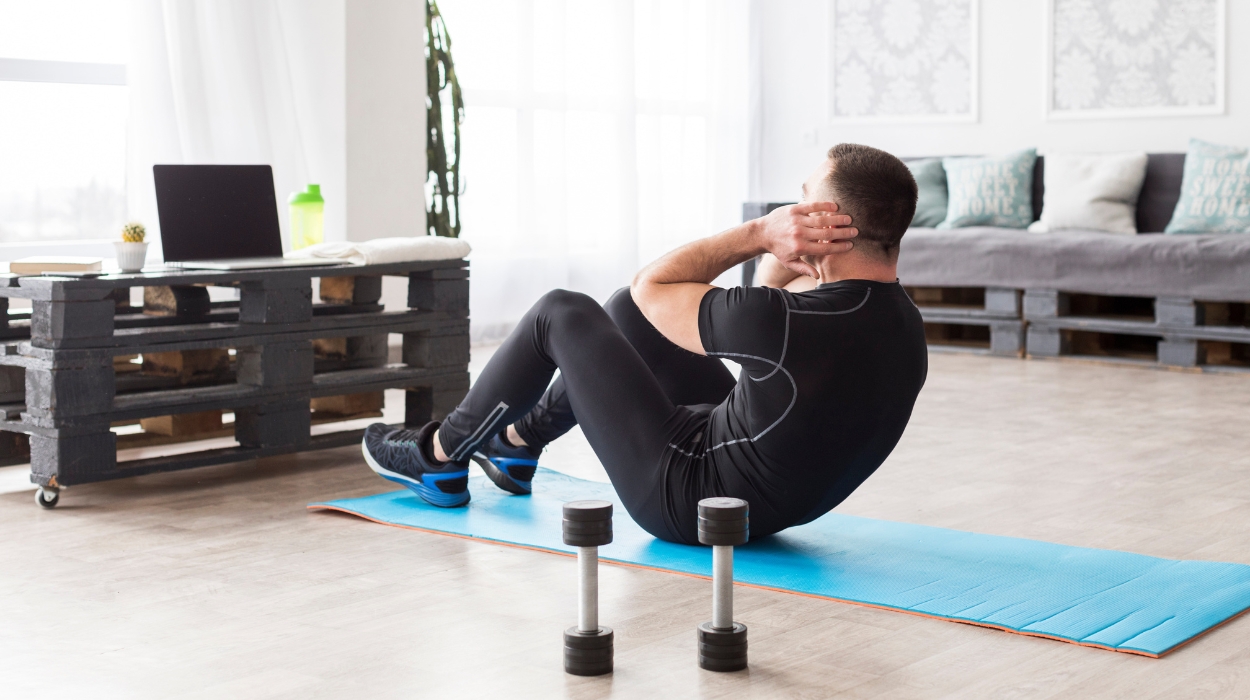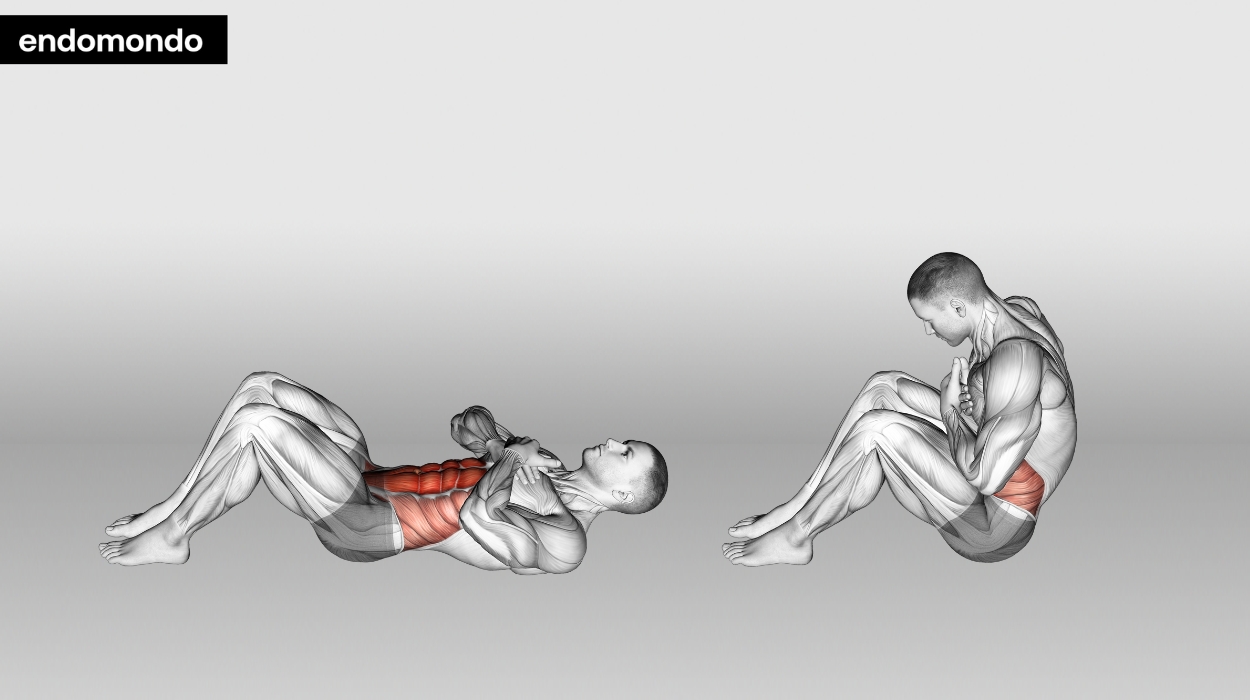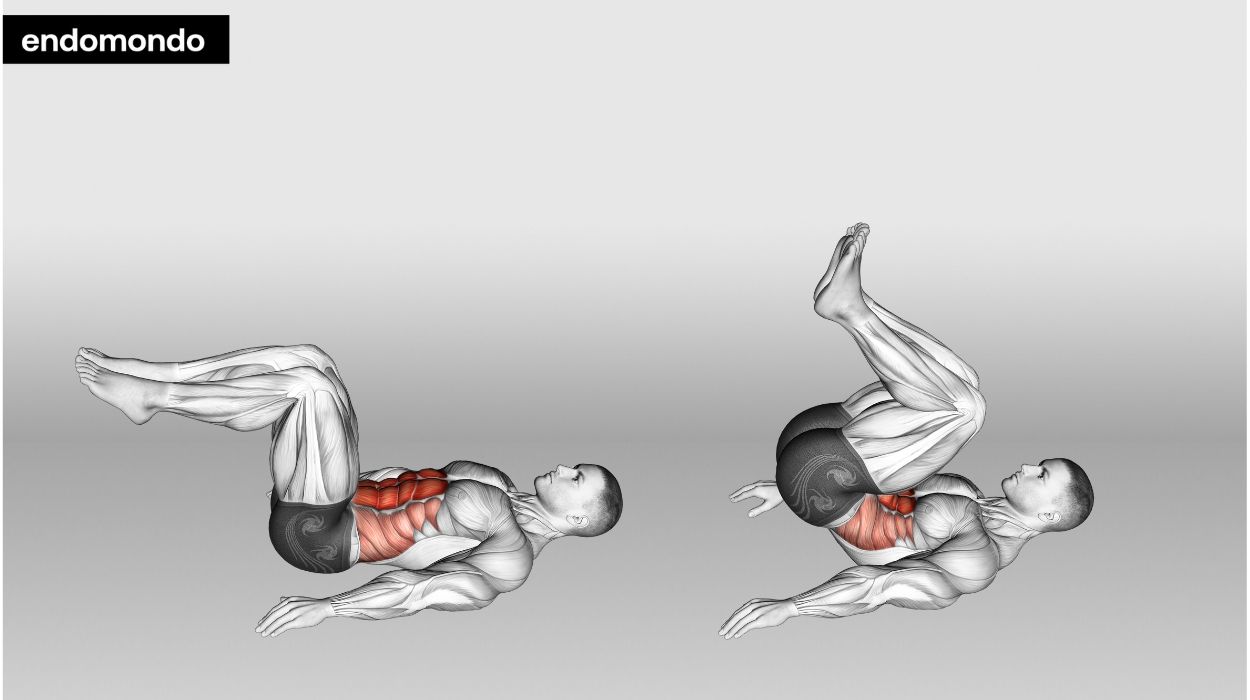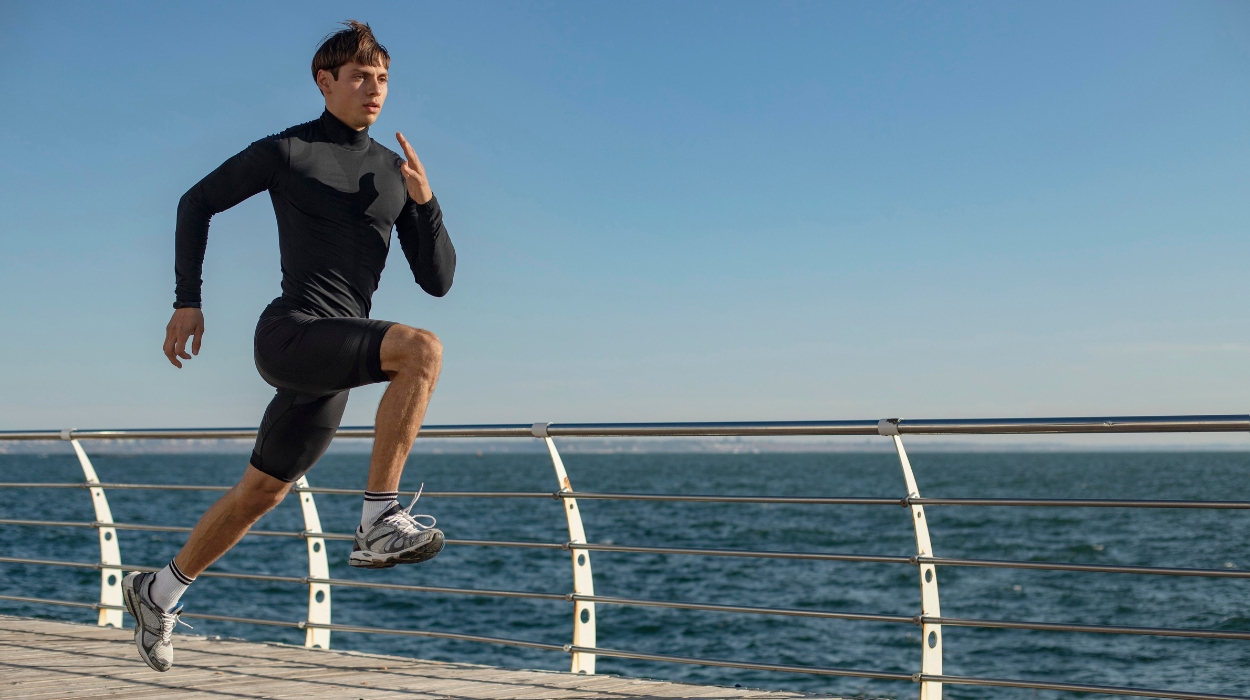
If you were to ask someone to name three exercises, it’s a good bet two of them would be sit-ups and push-ups. They’re two simple, effective, and basic exercises that we all learned in gym class. Sit-ups tend to stay popular as we grow older, as they work your core and can help tone your abs.
The real reason they stay popular, however, maybe that it seems like they should trim off abdominal fat. Sit-ups work the abdominal muscles after all, right? In fact, while sit-ups are great exercises, achieving a low body fat percentage is a little more complicated.
How Many Sit-Ups Should I Do A Day To Lose Belly Fat?
There is really just one simple answer to this: none. Resistance training exercises like sit-ups focus on building your core strength and are not an effective way to burn fat. When performing sit-ups, you’re working on relatively small muscle groups. In absolute terms, you’re not using much energy, even if you’re exerting yourself and breaking a sweat.
Therefore, if burning belly fat is your goal, you should consider exercises that are more energy-intensive such as cardiovascular workouts.
How Many Sit-Ups A Day To Lose Weight And Belly Fat?
The answer to this is pretty straightforward: none. Exercises like sit-ups are a variety of exercises called resistance training,[1] more or less the same thing as strength training. Sit-ups use your body weight to provide resistance, building strength in your core muscles. Resistance training is not really an effective way to burn fat, however.
The muscle groups you’re working on while performing sit-ups are relatively small. Even if you’re working hard and breaking a sweat, you’re not burning much energy in absolute terms. The same could be said for most other targeted exercises, like bicep curls.
If you want to shed belly fat, you need to look at cardiovascular workouts, exercises that get your heart pumping and lungs working. Cardiovascular exercises are more energy-intensive because they engage more muscle groups and will therefore burn calories faster. That’s the key to burning fat: using multiple muscle groups at high intensity.
That’s not the same thing as saying sit-ups are pointless or that they won’t help you achieve a flat stomach. Strengthening the core muscles is never really a bad idea. Increasing muscle tone in that area can also make your belly tighter and less round. Sit-ups can help you achieve both of those goals.
Anatomy Of A Sit-Up

A sit-up is popular because it is pretty simple. There is a whole range of variations on the sit-up, but the basic version is straightforward. To perform sit-ups:
- Lay on your back.
- Bend your knees so your feet are flat on the floor.
- Put your hands up loosely next to your ears or cross on your chest.
- Engage your core muscles to lift your upper body up, keeping your back straight.
That last part is what distinguishes sit-ups from crunches by the way. Both have you lying face up and knees bent. A sit-up involves lifting your shoulders and back up, while the crunch just requires you to lift your shoulders and head.
The two exercises work different sets of muscles. A crunch will engage your rectus abdominis, your abs, almost exclusively. A sit-up, on the other hand, will engage several different muscle groups. Those include:
- External obliques
- Internal obliques
- Transverse abdominis
- Hip flexors
Sit-ups engage more muscle groups, so they burn slightly more calories. Engaging more muscle groups with one exercise can also make your workout more efficient. Both can be useful for toning and strengthening your core. While sit-ups burn more calories, they do have some disadvantages.
In fact, many fitness coaches prefer crunches in a workout routine. Sit-ups put more pressure on your lower back, causing strain. It’s also usually pretty difficult for beginners to maintain good form. As a result, other core exercises that are less likely to cause pain can be substituted.
Alternative Core Exercises To Sit-Ups
Since the core muscle groups are important in so many ways, a lot of different core exercises have been designed to work them. It’s very easy to find effective alternatives to sit-ups that are less likely to strain your back.
The Plank

The plank is a deceptively simple exercise. Despite being a simple, static position, it has a reputation as a great, if tough, part of your workout.
It’s similar to a push-up. However, instead of resting on your palms, you prop yourself up on your elbows, keeping them underneath your shoulders. Your back and legs should form a straight line, higher at the shoulders than the feet.
Now just hold that position for a while. It’s not too hard to start with, but as time goes on your core muscles will have to work harder to keep you in that straight line position. The longer you go, the harder it gets. It’s usually best to start holding it for a shorter length of time but do the exercise more often.
There are also a lot of different variations on planks if you’re interested in upping the difficulty or focusing on specific muscle groups.
The Reverse Crunch

You reverse a crunch by moving your legs instead of your chest. To perform a reverse crunch:
- Lay on your back.
- Raise your legs so that your thighs are perpendicular to the ground.
- Bend your knees so your calves are parallel to the ground.
- Engage your core muscles to pull your hips up, bringing your knees to your chest.
It’s called a crunch, but it really works many of the same muscle groups as a sit-up. Your legs weigh less than your torso, so you’re less likely to strain yourself. However, a lower weight also means you’ll need more repetitions.
What Exercises Flatten Your Belly?
We’ve burst one fitness bubble already, that sit-ups can reduce belly fat. We’re about to pop another one: there is no truly effective way to trim fat from a specific body part. Your body draws the fat it burns more or less evenly from across the body. In order to lose belly fat, you have to lose excess body fat generally.
Any sort of activity may burn fat. Though we just got through saying that sit-ups won’t burn belly fat, it’s true that sit-ups burn calories. However, some types of exercise burn calories much faster in a shorter period of time.
To lose weight, an exercise routine has to be paired with a healthy diet. You need to run a calorie deficit, taking in fewer calories than you burn. It’s very difficult to achieve weight loss through a balanced diet alone, however. Instead of counting each calorie, burn as many as you can with exercise.
Cardiovascular Exercises

Different exercises focus on different areas of the body. For example, sit-ups focus on the abs. Push-ups work the chest and arms. In the same way, cardiovascular exercises focus on improving the endurance and strength of the cardiovascular system, including the heart and lungs.
These are generally the same sort of things as aerobic exercise. The goal is to raise the heart rate and respiration rate. Even small amounts of cardio can be beneficial, as long as the heart rate is raised. Some examples of good cardio exercises include:
- Running
- Jogging or walking
- Swimming
- Biking
Some might better fit your needs. For example, swimming is often low-impact and can be good for people with joint problems. Biking is also generally easier on the joints.
It can also be helpful to think of it as an activity, rather than exercise. Dancing will definitely help you burn calories, for example. Playing basketball or baseball with your buddies may be more fun than doing laps at the pool.
Compound Exercises
It is possible to combine strength training and fat burning. As we mentioned, using more muscle groups at once can also be a good way to burn calories. Compound exercises are movements that engage multiple muscle groups and use multiple joints. Examples of compound exercises include squats, jumping jacks, and lunges.
There are many different types of compound exercises. With these, you may not burn body fat as quickly as you would doing a cardiovascular exercise. You may also not build strength as much as you would with an isolation exercise, focusing on a single muscle group. But you’ll do both faster than you would be doing each separately.
There are many different compound exercises, including:
- Push-ups
- Bench presses
- Lunges
- Kettlebell swings
- Pull-ups
- Deadlifts
Some of those require equipment. There are also methods that use compound movements without any equipment. Bodyweight exercises, which use the weight of your body to add resistance, are an example. Another example is the ‘animal’ or ‘primal’ movement exercise programs.
Reach Your Fitness Goals
Any one type of exercise is not enough for whole-body fitness. Workouts are usually designed to focus on a few specific areas or a particular type of fitness. While many people may focus on one area of the body, to truly be fit requires exercising your whole body. To put together a personal exercise program, you’ll need to:
- Identify your goals
- Select exercises that focus on meeting those goals
- Create a schedule that includes time for recovery
- Follow through
- Re-evaluate and repeat
Recovery is a key aspect and can’t be skipped. Most muscle is actually built during the recovery period, so skipping it just means robbing yourself of some gains.
Some people have found that supplements can help lose weight or build muscle. Even using supplements can affect your weight. It’s important to be careful, however, as there can be serious side effects.
Otherwise, the most important part is to keep yourself motivated at each step. Many people use some sort of reward system, treating themselves to a day at the spa or a new power tool when they hit certain goals. It may seem silly, but all that really matters is that it works.
Resources
- Health (2022). Resistance training – health benefits. [online] Vic.gov.au. Available at: https://www.betterhealth.vic.gov.au/health/healthyliving/resistance-training-health-benefits.




